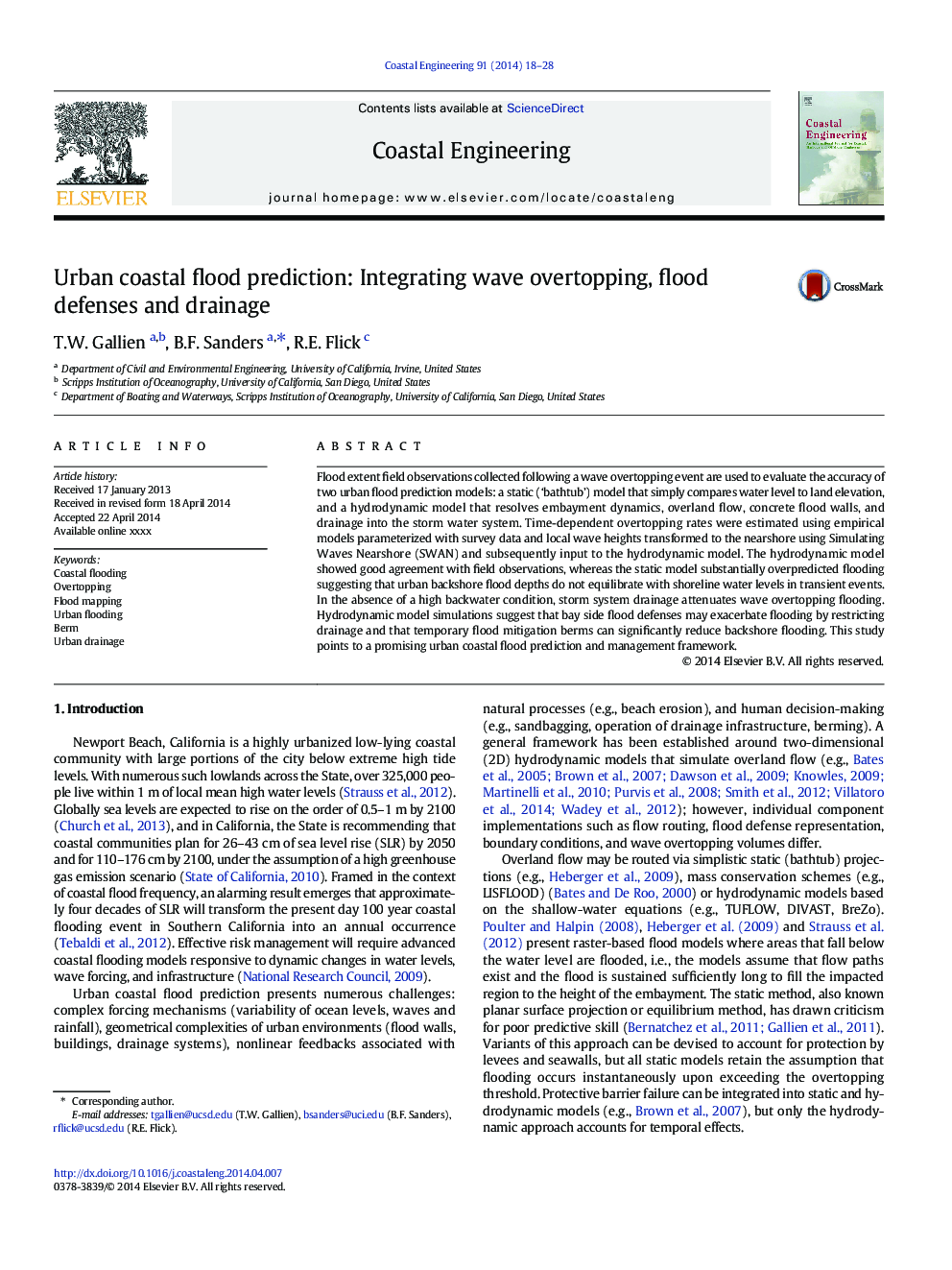| Article ID | Journal | Published Year | Pages | File Type |
|---|---|---|---|---|
| 8059792 | Coastal Engineering | 2014 | 11 Pages |
Abstract
Flood extent field observations collected following a wave overtopping event are used to evaluate the accuracy of two urban flood prediction models: a static ('bathtub') model that simply compares water level to land elevation, and a hydrodynamic model that resolves embayment dynamics, overland flow, concrete flood walls, and drainage into the storm water system. Time-dependent overtopping rates were estimated using empirical models parameterized with survey data and local wave heights transformed to the nearshore using Simulating Waves Nearshore (SWAN) and subsequently input to the hydrodynamic model. The hydrodynamic model showed good agreement with field observations, whereas the static model substantially overpredicted flooding suggesting that urban backshore flood depths do not equilibrate with shoreline water levels in transient events. In the absence of a high backwater condition, storm system drainage attenuates wave overtopping flooding. Hydrodynamic model simulations suggest that bay side flood defenses may exacerbate flooding by restricting drainage and that temporary flood mitigation berms can significantly reduce backshore flooding. This study points to a promising urban coastal flood prediction and management framework.
Related Topics
Physical Sciences and Engineering
Engineering
Ocean Engineering
Authors
T.W. Gallien, B.F. Sanders, R.E. Flick,
